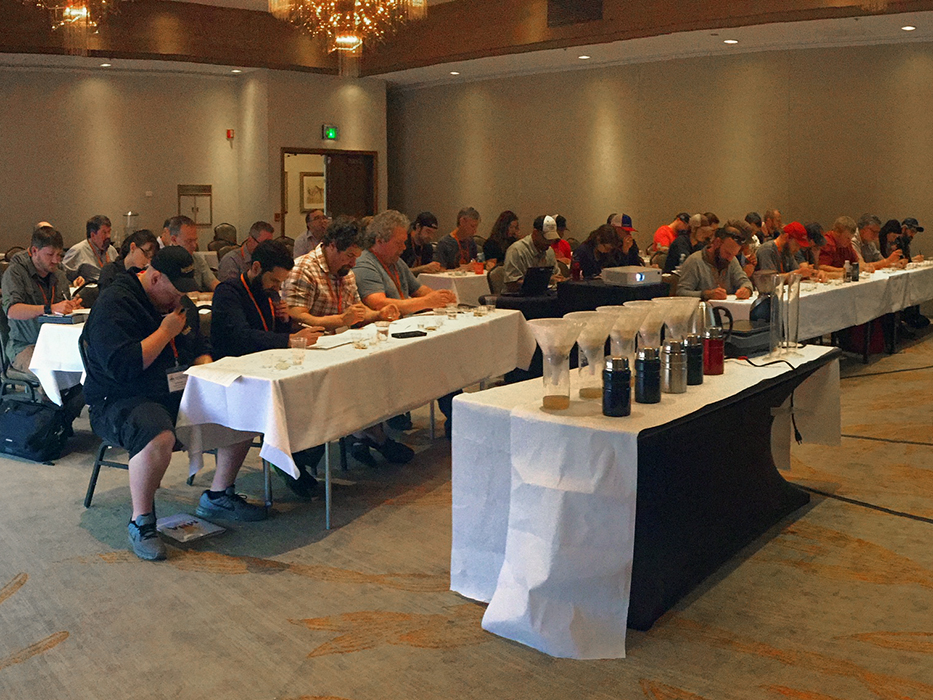Team Barley at the Montana Brewer’s Association Conference
Plant Science Says - December 2017
By: Hannah Turner
Jamie Sherman and I recently traveled to Missoula to present at the annual Montana Brewer’s Association meeting. This conference is a great opportunity for Montana brewers and others connected to the industry, such as farmers and maltsters, to network and grow their knowledge about new techniques, products, and research. Jamie’s first talk was an open panel discussion which had her alongside a Montana farmer, Erik Somerfeld, and the new Maltster for Montana Craft Malt, Jeff Parks. Erik had a great history of barley varieties and growing them in Montana while Jeff shared a bit about plans for the new 10,000 ton malt facility in Butte. Jamie brought these two topics together with the research we are doing to bring new varieties to the state, which was a great transition to our big presentation of the conference – malt sensory.
Beer flavor is controlled by several factors, primarily its main ingredients: malt from barley, yeast, and hops. Recently, the industry has become interested in the contribution of the barley variety to flavor. A goal of our current USDA-NIFA grant, called the Rocky Mountain Malt Consortium, is to classify the flavor of 200 historical barley lines collected from all over the world to determine if there are unique qualities. The project consists of two parts 1) assemble a group of panelists (stakeholders) to evaluate the sensory/flavor profiles of each variety 2) pair the flavor profile with a chemical profile built by our collaborators at Colorado State - who will run metabolomics/proteomics on the lines. This may allow for easier selection and control in breeding new varieties for the state based on what the stakeholders prefer.
Our presentation to the Montana Brewers Association was a pilot run of our flavor profiling for the USDA-NIFA grant. To make beer, barley is converted into malt and the malt is ground. The malt is then soaked in hot water to extract the fermentable sugars, creating a solution called the wort. This solution provides the basis of the brewing process and in our case is the solution analyzed for malt quality and flavor. Malt sensory is performed on the wort in a similar way to which judges would evaluate a beer in competition.
We selected five barley varieties, malted and lightly kilned them under the same conditions to highlight differences in the barley variety. About 30 brewers and maltsters from around the state participated in our session and all agreed that they could perceive differences ranging from flavor, aroma, color, and mouthfeel. The best part about the presentation was how excited the group was about this project and the enthusiasm we got from several to continue participating as sensory panelists for the full project once we have it ready!

